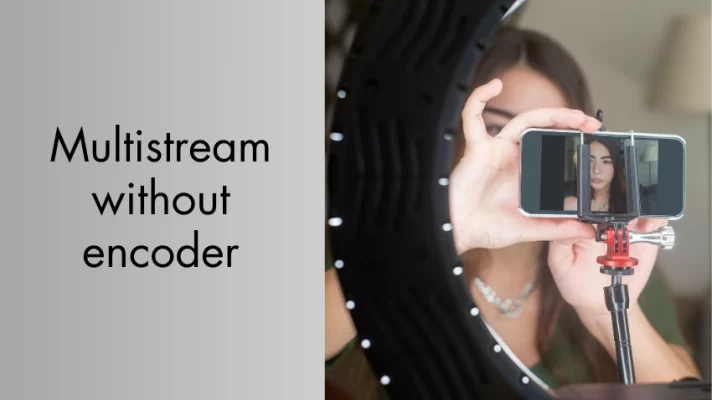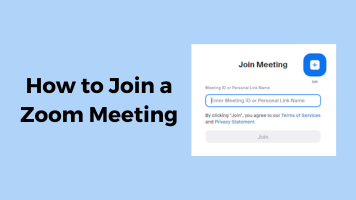Documentary production is perhaps one of the most challenging but gratifying projects a videographer can work on. Making a documentary is like having a great idea, recording video footage, and presenting it to a small group of people. But beyond creativity and skill, filmmaking involves many wonderful adventures.
Below, we’ll teach you how to make a good documentary and the most important tools you’ll need for your documentary-making journey.
What are the Five Elements of a Documentary?
There are usually five main elements to a successful documentary. Each element represents an important narrative device that leads your audience to understand your subject. If you use a combination approach, your documentary can feel rich and varied while still providing a great deal of information. Here are five elements.
- Interviews: Direct conversations with experts provide crucial context and information about the subject matter.
- Cutaway Footage: This footage will be used as a fixed film or B-move fills to help set the mood and provide more information about the location and subject matter.
- Chronicled Footage: Connects past themes to the present through recorded images and video.
- Film Verite: Live-action footage related to your subject will provide additional context for the viewer to watch narrative ideas in real time.
- Interactive Footage: Behind-the-scenes content often provides a fun and enlightening experience as the viewer learns alongside the filmmaker.
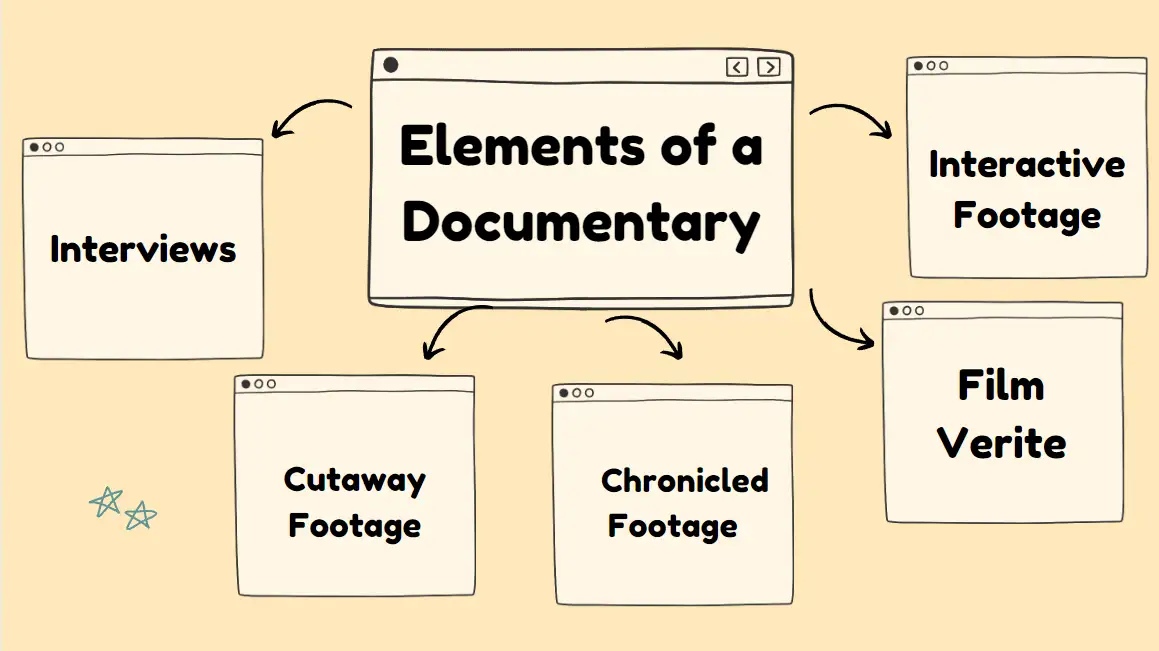
Step-By-Step Instructions to Make a Documentary
1. Research and Choose a Worthy Topic
(1) Do Some Research
High-quality research is essential to the core concept of your documentary. It helps gather facts, uncover interesting characters and storylines, tap into your ideas, and even enhance your understanding of the subject matter.
Do not forget the following research methods.
- Take notes during your research
- Ensure accuracy
- Conduct initial interviews
- Watch documentaries of the same genre
- Find an interesting and inspiring angle
- Find a point that resonates with the audience
- Learn about the documentary from archival footage, newspaper archives, academic research papers, published literature
(2) Choose a Worthy Topic
Find a topic that you are passionate about and that is meaningful to you. And then build a story that your audience will enjoy. Learn all you can about the subject of your documentary. To determine the content, tone, and style of your documentary, you will need to consider the following additional things:
- The purpose of the documentary
- The target audience
- Filming equipment
- Screening location
2. Make a Detailed Plan
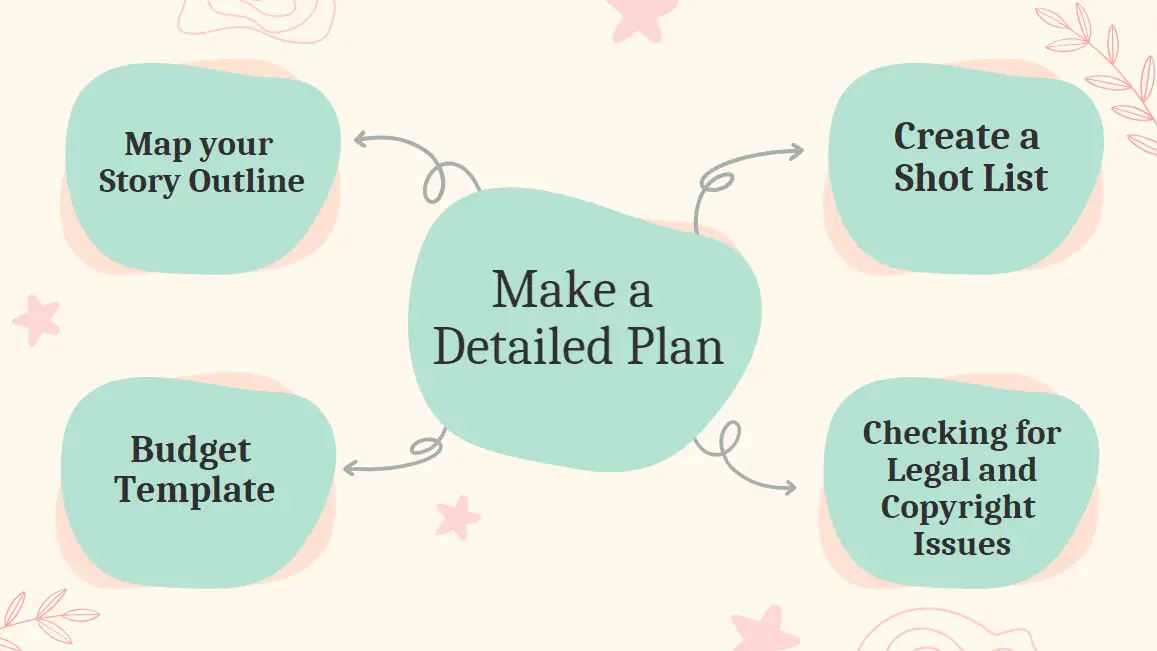
(1) Map your Story Outline
Once you have all the necessary information ready, think about how to make a documentary film and how you will tell your story. Identify your central plot point, the compelling elements of your story, the important characters, the narrative structure, and the overall storyline.
(2) Budget Template
Setting an overall budget allows documentary filmmakers to decide how far they can go to increase production without crossing the line. The following are often crucial components of budget planning for documentaries.
- Equipment and studio costs
- Liability insurance
- Production crew
- Copyright costs
- Props
- Catering
- Post-production editing
- Promotional Costs
If you are looking to increase your budget, this is also the perfect time to find sponsorships and plan fundraising events.
(3) Create a Shot List
To make a movie you need to create a storyboard or write a script. This is because the script describes what the audience will see and hear. You will need to determine the plot of the story, a list of shots, an indication of areas and interviewees, a preliminary list of interview questions, and a suggested schedule for the opening announcement (OBB) or presentation, as well as the closing announcement (CBB) or conclusion. In addition, you should decide what existing documents and materials to record and add to during the shoot.
(4) Checking for Legal and Copyright Issues
Before you begin filming and using existing footage, please follow legal documentary production legal guidelines. This includes obtaining the right to use footage, music, and other materials protected by strict copyright laws. Use as much of your original music as possible to avoid spending too much time, effort, and money.
3. Select Essential Shooting Equipment
Before you can start making your documentary, you need to choose the right equipment for filming. Here we recommend you FineShare FineCam, a high-quality screen recorder.
FineCam is a good choice if you want to make a vivid documentary and detail all aspects of visual effects. Because it can help you record videos in 4k quality easily. Its simple and intuitive interface is suitable for beginners. fineCam can also use your iPhone as an HD webcam and can record your screen and webcam at the same time.
For better shooting effects, you can upload pictures of main characters, landscapes, everyday scenes, and YouTube videos you’ve taken to change your webcam background. FineCam can help you get a professional look by adjusting the filters, contrast, and lighting as needed.
Best of all, when you use FineCam to create a documentary, your recorded video is broken down into several-minute segments. When all the recording is done, you can stitch the clips together into a complete video. Moreover, you can locate them on your computer.
Download it now and have a try!
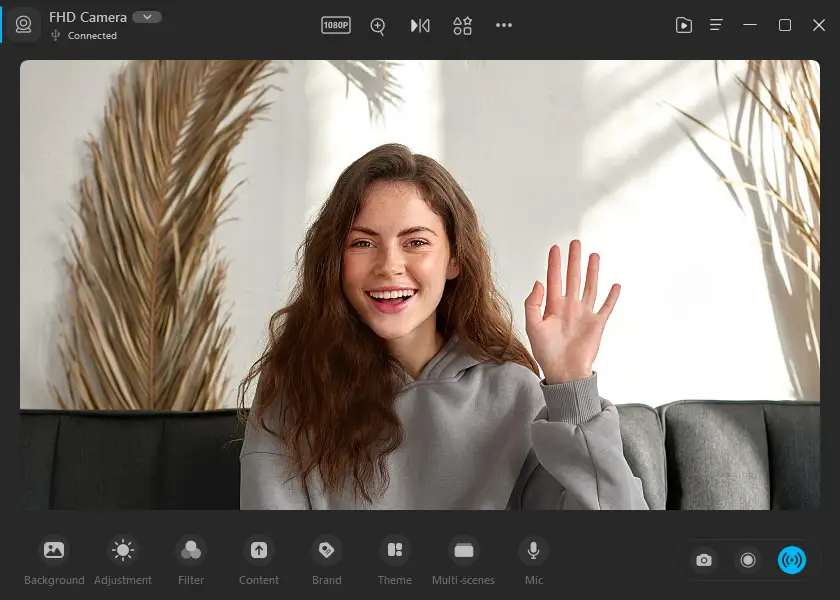
4. Start Shooting
Use your recording tool to shoot footage based on your script and storyboard. Record interviews, capture visuals, and record events or scenes that relate to your story. You need to pay attention to composition, lighting, and sound quality.
5. Post-Production
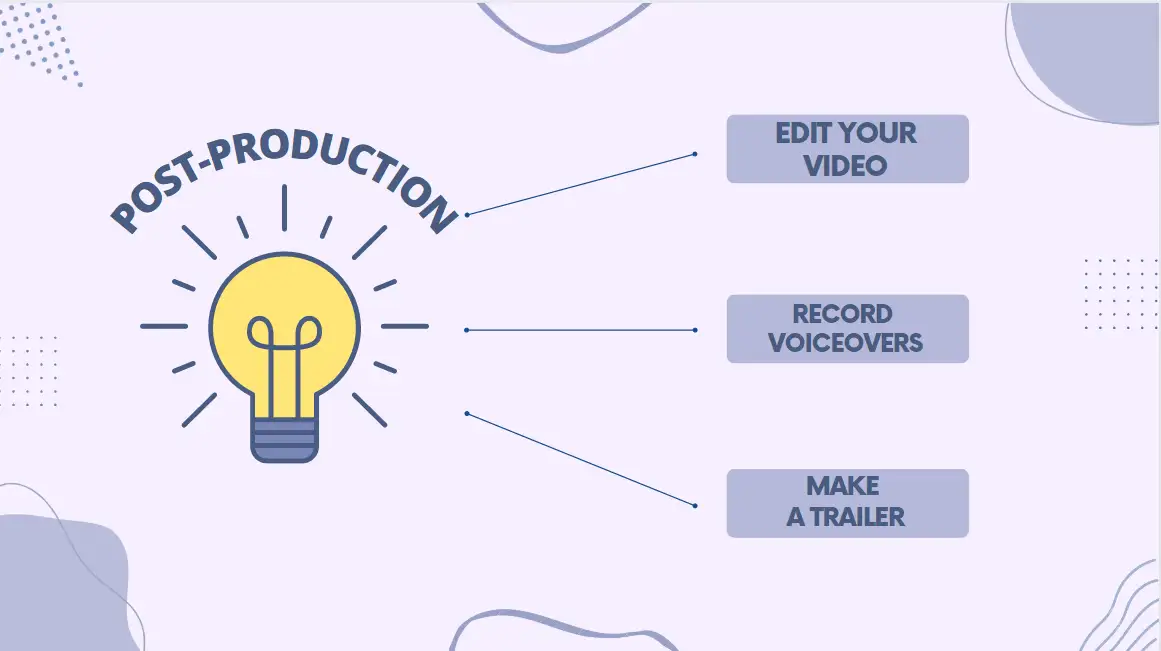
- Edit Your Video
Once you have gathered the audio, video, and other digital materials you need to make your documentary, it’s time to start editing your video. Import the videos you have shot into the editing software in order. After laying out all the footage, edit and trim the video to remove unnecessary shots. You can refer to the editing techniques of professionals to create a roller coaster emotional experience and an exciting viewing experience.
- Record Voiceovers
You should add the essential text, graphics, images, audio, other digital content, music, and voiceovers to your documentary.
- Make a Trailer
Create an exquisite trailer to promote your video project and engage your audience.
When you have produced a full-length documentary, you can share it with your closest friends and family and have those with influence write reviews for your documentary. Then you can start marketing your film on YouTube and social media sites and by word of mouth.
If you think your film deserves further promotion, especially with some positive initial reactions and reviews, you can hire a professional distributor to help bring your film to a wider audience. You can also consult local TV stations and other film distribution channels for possible partnerships and recommendations.
Conclusion
Referring to the steps above, along with determination, creativity, and storytelling skills, you can create a powerful documentary. And it can also resonate with your audience and have a meaningful impact. So start telling your story and share it with the world!

